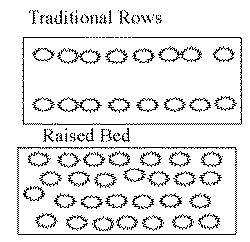 How To Grow Leaves
How To Grow Leaves
Grow Leaves Fast - Leaf crops usually taste best and yield the most greens when they are grown quickly in rich loose soil. An adequate supply of nitrogen is essential. Legumes will fix their own nitrogen from the air. Make sure their seed is inoculated if that species hasn't been grown on the land in the past three years. Other crops can obtain nitrogen from composted manure. A straw mulch can keep rain from splashing mud onto leaves. Most leaf crops need about 2.5 cm (1 in) of rain per week for rapid healthy growth. When it is very hot and dry more than that is needed. Make up for rainfall shortages by watering deeply once a week.
 Avoid Poisons - Try not to use insecticides, herbicides, or fungicides on leaf crops. It is better to plant a bit more land to make up for moderate insect damage than to expose your family to agricultural poisons in their food. Drying the leaves and grinding them into a powder, eliminates concern over insect damage that might make the greens less marketable. If it is absolutely necessary to use insecticide to prevent losing a crop, use a safe short residual product like neem or rotenone and try to wait 15 days after spraying before harvest. Wash greens well in clean water before cooking them or drying .
Avoid Poisons - Try not to use insecticides, herbicides, or fungicides on leaf crops. It is better to plant a bit more land to make up for moderate insect damage than to expose your family to agricultural poisons in their food. Drying the leaves and grinding them into a powder, eliminates concern over insect damage that might make the greens less marketable. If it is absolutely necessary to use insecticide to prevent losing a crop, use a safe short residual product like neem or rotenone and try to wait 15 days after spraying before harvest. Wash greens well in clean water before cooking them or drying .
 Intercropping and Raised Beds - Intercropping is planting two crops in the same field at the same time for their mutual benefit. Leaf crops, especially leguminous ones like cowpeas, are often the ideal intercrop with corn, cassava, bananas, and other main food crops. Raised beds are garden beds usually about 120 cm (48 in) wide and c. 20 cm (8 in) high. The soil height can be raised by adding dirt dug from between the beds and by adding compost and manure. Raised beds allow better soil drainage and root penetration. The initial investment of labor is quickly repaid in easier cultivation and better yields. Both intercropping and raised beds greatly increase the number of plants that can be grown in a given area and can produce much better yields than traditional row crops.
Intercropping and Raised Beds - Intercropping is planting two crops in the same field at the same time for their mutual benefit. Leaf crops, especially leguminous ones like cowpeas, are often the ideal intercrop with corn, cassava, bananas, and other main food crops. Raised beds are garden beds usually about 120 cm (48 in) wide and c. 20 cm (8 in) high. The soil height can be raised by adding dirt dug from between the beds and by adding compost and manure. Raised beds allow better soil drainage and root penetration. The initial investment of labor is quickly repaid in easier cultivation and better yields. Both intercropping and raised beds greatly increase the number of plants that can be grown in a given area and can produce much better yields than traditional row crops.
 How To Grow Leaves
How To Grow Leaves 
